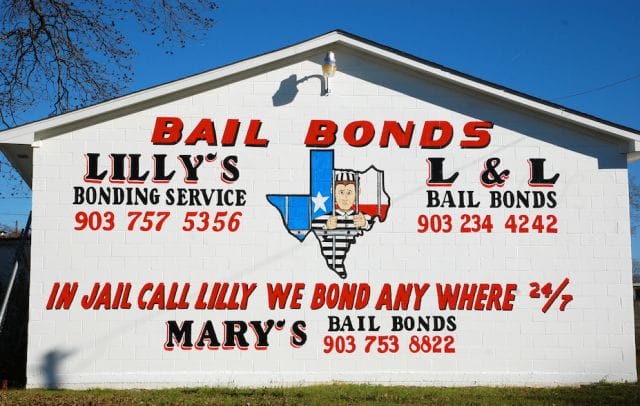
![]()
At the apex of Baltimore’s Freddie Gray protests, 18-year-old Allen Bullock grabbed an orange street cone, leapt atop an unmarked police car, and smashed out its windows. Captured on camera, his actions would become the iconic image of the protests, appearing in newspapers across the world.
Encouraged by his parents, Bullock later turned himself in, and went into police custody. He was subsequently charged with 8 criminal counts, including rioting and vandalism, and his bail was set at $500,000.
Nearly double the $250-350,000 bail set for each of the 6 officers charged in relation to the death of Freddie Gray, the amount far surpassed what Bullock or his family could afford. “It’s just so much money,” his mother told The Guardian. “Who could afford to pay that?”
It’s a question worth asking. With the highest incarceration rate in the world for a large country and a thriving, for-profit bail bond industry, the United States maintains a criminal system that is very good at getting people to appear for their trials.
Bail in America is also a system that has a very particular bias against the poor. If you can’t afford bail, you’re stuck in jail until your trial, costing taxpayers money (often, over trivial offenses). If you have a lot of money, then bail is no problem. And if you fall somewhere in the middle of this economic scale, then you just might end up enriching the uniquely American industry of “bail bonding.”
In the truest sense, the ability to pay for bail is the ability to buy temporary freedom — and there is a wide disparity in Americans’ ability to do so.
What Is Bail?
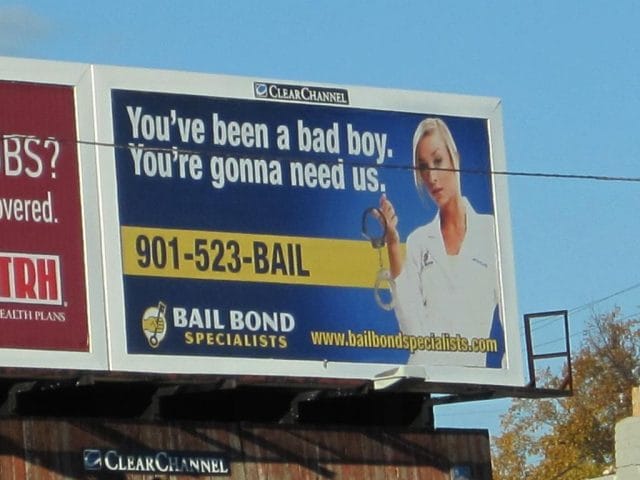
Using sex to sell…bail
Bail is defined as “money you leave with the court as a guarantee that you will go to all future court hearings.” If all hearings are attended, the cash is later returned to the payee. Even when there is a risk of flight, governments find it expensive and unjust to keep those charged with crimes in jail prior to their trial; putting money on the line is a simple way to compel people to show up.
Once a case is completed, the bail money is returned regardless of whether the defendant is found guilty. If the defendant misses the hearing, or is arrested again before the hearing, the money is forfeited to the state. States often grant a grace period in which all or part of the money may be returned if the defendant eventually appears in court.
The use of bail in order to grant pretrial release is a common practice throughout the world, Though the concept of bail dates back to Ancient Rome, the United States adopted it from the British criminal justice system. In medieval England, judges travelled around the country to conduct trials, which was often very time-consuming. Not wanting to hold accused people while they waited for the judge, local sheriffs set bail. Initially, another individual could promise to make sure the accused appeared at trial — but over time, this human pledge was replaced by a monetary amount.
Typically, after an arrest is made, bail is offered to the accused in one of two ways: First, immediately after booking, it may be offered based on a pre-established list of bail amounts for common crimes. It also may be offered at an arraignment or bail hearing where a judge uses his or her discretion to set the amount (this usually happens within 48 hours of booking). Only 4% of all defendants are denied bail.
In 2009,the VERA Institute for Justice, an organization which seeks to “make the justice system fairer,” collected bail data for the 75 largest U.S. counties. Their study found that 40% of felony defendants were released on their own recognizance and 60% were offered bail. The average bail for felonies was $55,400, with murder posting, far and away, the highest average:

Source: The VERA Institute for Justice
Misdemeanor data is not available on a national scale, though a Human Rights Watch report revealed that 77% of people charged with a misdemeanor in New York City were released on their own recognizance, and the other 23% were offered bail. Within that 23%, bail amounts widely varied:
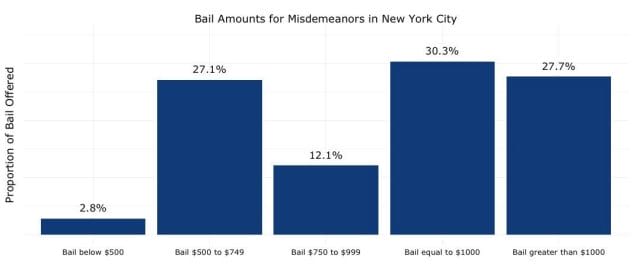
Source: Human Rights Watch
Of the 26,459 cases in which bail was set, 19,137 — or 72.3% — the bail amount was $1,000 or less. “Despite [this] relatively low bail amount,” writes the report, “the overwhelming preponderance of defendants required to post that bail amount were jailed because they could not do so.”
What If You Can’t Pay?
In the New York City example above, only 37% of defendants were able to post bail. This is typical of the bail system: the majority of defendants can’t afford the bail amount set — even if it is under $1,000.
When a defendant can’t pay bail, he generally has two choices: he can stay in jail and wait it out, or he can pay a fee to an “agent” who will post a bail bond for him. Not everyone qualifies for this second option, as the bail bondsman can refuse people he considers to be high risk.
For those who meet the bondsman’s standards, the defendant must pay the bail bondsman a fee in the neighborhood of 10% of the bail bond amount (which is typically several times higher than the amount at which the bail was originally set). Regardless of the outcome of the case, this fee is never returned.
If his client doesn’t show up to trial, or skips town, the bail bonds agent loses his money. In these cases, he may choose to hire a bounty hunter. For a fee, a bounty hunters tracks down individuals who have missed their trial, or who have attempted to flee. Although the police are also responsible for tracking down the people who don’t appear, bounty hunters have a much higher recapture rate.
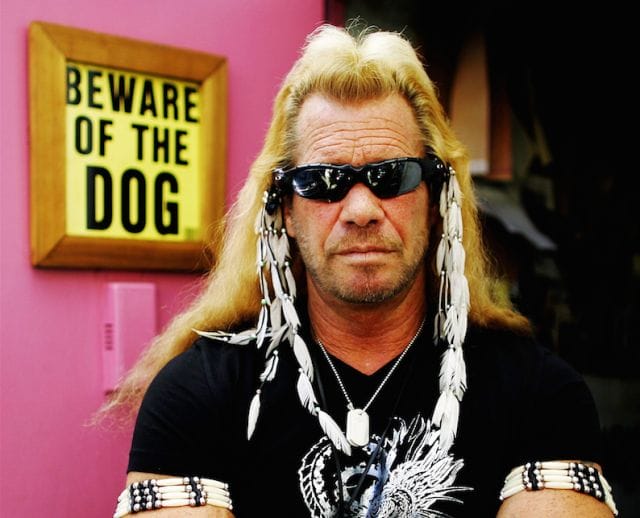
Dog the Bounty Hunter has achieved a strange breed of fame for “hunting down” trial-jumpers
In order to have his business instated, a bail bondsman must pass the state licensing requirements and an exam. He then must have an application approved by the state licensing board. A bail bonds business is only able to operate if a larger insurance company will guarantee its bonds.
These larger insurers, called surety companies, underwrite approximately $14 billion dollars of bail bonds per year, and generally take a 10% fee on what the bail bonds agent earns.
According to a report from The Investigative Fund, surety companies are the big winners in the bail bonds game because they rarely have to pay for a bail loss. The report quotes an officer from the surety company AIA claiming that his company has never paid a bail loss. The bail bonds agent is responsible for paying the bail amount when the defendant doesn’t appear in court. The surety company is only liable if the bail bond agent is unable to pay, and surety companies mitigate this risk by requiring the bail bonds agents to keep sufficient funds to cover their losses.
Criticisms of Bail and Bail Bonding
The primary criticism of the bail system is its regressive nature. Wealthy individuals may be able to put up the entirety of the bail with little consequence; those without wealth are more likely to be stuck in jail. For those who cannot afford the entire bail amount, but have enough money to pay the fee of a bail bonds agent, this means giving up the money for the nonrefundable fee.
It’s also expensive, both directly and indirectly, to keep people in jail. To maintain a crowded jail, the state, local, and federal governments pay a premium for staff, food and shelter. A sheriff’s department in Lake County, Oregon estimates that one day in jail costs $130. The overt cost is that keeping people in jail often pushes them further into poverty: inmates often lose their jobs and savings while incarcerated, and are unable to support their families.
Some researchers argue that being held in jail leads to worse legal outcomes than being released. A study on defendants in Kentucky claims that individuals with similar backgrounds who were not released before trial are over three times more likely to be sentenced to prison than those released.
Compared to most other countries, the United States has unusually harsh bail policies. The United States holds nearly 500,000 people in jail pre-trial. This is a rate of 153 pretrial inmates for every 100,000 people in the population, which is substantially higher than any other country with a population above 10,000,000 people. In comparison, Canada and France both hold less than 50 individuals for every 100,000 people.
Other nations typically set bail amounts that are more accessible for defendants. A report on bail in South Africa demonstrates that, unlike in the United States, the vast majority of defendants offered bail in district courts are able to pay the bail amount. In Canada, bail must be set so it is within the reach of the individual or their family. In the United Kingdom, defendants are generally either released on their own recognizance or pretrial release is completely denied; financial bail is rarely used.
In fact, for-profit bail bonding is illegal in most of the world. The American Bar Association and the American Civil Liberties Union have attacked the bail bond industry for not serving the public interest. The bail bonds industry’s incentive is to fight against reform that leads to a reduced demand for bail: recent bipartisan efforts in New Jersey to decrease the number of individuals who pay bail was opposed by representatives of the bail bond industry.
In Defense of Bail Bonding

The bail bonds industry defends the current system primarily through two arguments:
1) The bail bond industry is exceptionally good at getting people to come to their trial.
There is strong evidence that the bail system is effective in getting people to come to trial. The most impressive evidence comes from a study by economists Alex Tabarrok and Eric Helland. Their analysis suggests that for individuals of similar age, sex and criminal background, those who have been released on a bail bond “are 28 percent less likely to fail to appear.” When defendants do fail to appear at their first trial, the bail bond industry is particularly good at making sure they eventually show up. One year after having missed their original trial, only 21% of those released on bail bonds had still not appeared in court, compared to 32% of those released on their own recognizance.
A study from the University of Texas also contains strong evidence that bail works well if showing up for trial is the primary outcome. Bail reform advocates counter that these studies are illegitimate because they include countries with poor supervision for people released on their own recognizance. In the reformers minds, this supervision would be improved if bail bonding was made illegal.
The claim that the bail bond system is free for taxpayers is based on the idea that, rather than having to fund government programs to make sure people make their trial, the U.S. efficiently privatized this service. The American Bail Coalition, the industry’s largest trade association, claims that while government programs to supervise released defendants “cost taxpayers $100,000,000 annually…commercial bail cost taxpayers $0.” Proponents of bail bonding believe it is appropriate for individuals who get arrested to pay for the system. They refer to the system as “user-funded”.
This argument could be called flawed when you consider that some people who would have appeared for their trial if released on their own recognizance instead had to pay bail bonds fees. These people are also taxpayers, and it is costing them significant sums of money. Bail also has a cost in terms of the lost economic production of those in jail who would be working, and the government funds used to keep those people incarcerated.
The Future of Bail
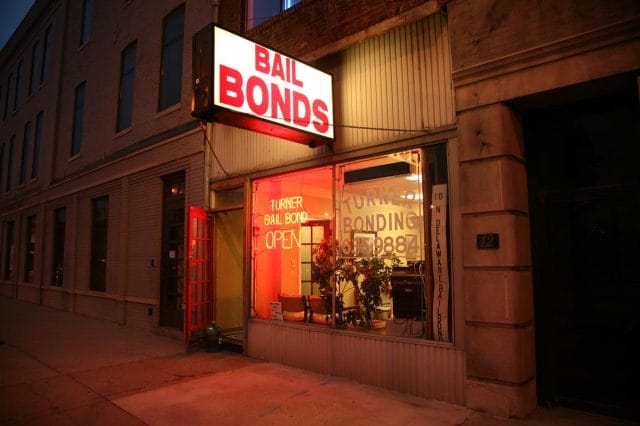
The bail system does not seem to be going anywhere in the 46 states in which it is still legal. From 1990 to 2009, the percentage of felony defendants released on bail has increased from 40% to 61%, while the number of those released on their own recognizance has decreased.
Reformers have been advocating for the increased use of risk assessment tools to make sure individuals with low probabilities of missing their trial don’t get a high bail or any bail at all. These tools use contextual data such as prior convictions, employment, and drug use history to determine a person’s likely behavior. Yet implementing reform is time-consuming and expensive. The state of Maryland has stated its intention to improve its systems, but has made little progress toward that goal. The sector that would most benefit from reforms, the poor, lacks political clout.
Some argue that lobbying from the bail bond industry has also contributed to the 20-year rise of bail. In a report attacking for-profit bail bonding, the Justice Policy Institute claims that “the industry has been successful in using its wealth and influence to promote industry friendly legislation and thwart reform efforts.” The report details various examples of how campaign contributions have been used to impact legislation, including over $100,000 in donations that went to two state senators in Texas who introduced bills that “set restrictions on alternatives to for-profit bail bonding…” The American Bail Coalition asserts that this report is “propaganda” and “filled with disinformation.”
The bail bond industry is now working to expand bail bonding as a method of solving the problem of overcrowded prisons. The proposal is that non-violent offenders could put up an amount of money to get out of prison that they would get it back if they acted in accord with what the state mandates. If they are unable to afford the amount, they can pay a bail bondsman a fee to stake the money, and then that bail bondsman essentially becomes their probation officer. Laws have already been passed in Mississippi and Michigan allowing for such bonds and some researchers believe believe their nationwide adoption is inevitable.
***
There are many good reasons to argue that bail in America should be radically reformed and possibly eliminated. In many ways, it’s a regressive tax against the poor. Likewise, the “bail bondsmen” industry profiteers on those who lack the ability to post their own bail.
And yet, the use of bail is on the rise and the bail bondsman lobby is working to extract more fees by fixing itself in the legal process. Despite the amalgam of reasons to reduce the prevalence of bail in America, it seems to only be getting further entrenched in our culture.
![]()
This post was written by contributor Dan Kopf. To get occasional notifications when we write blog posts, please sign up for our email list.



